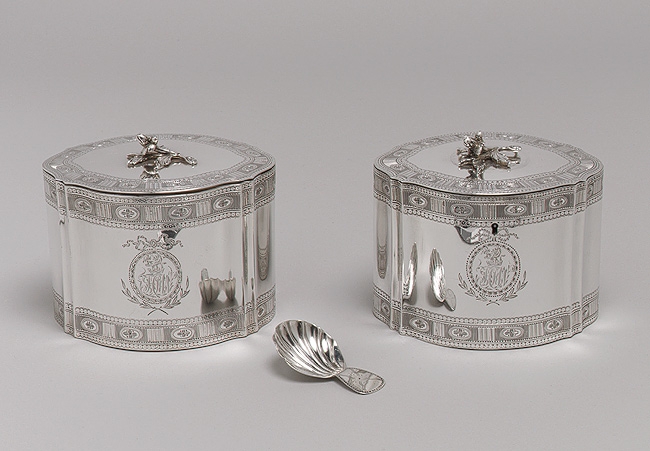Tea Caddy 1790-91
Each of this pair of tea caddies is made of rolled silver cut and seamed to make the upright shape, with a sheet soldered in place to form the flat base and a cover also of sheet silver. They can hold about twice the content of earlier caddies, reflecting the greater availability of tea leaf at a time when it had become a staple of social and domestic life. The light slicing and pushing-in of the surface, a technique called bright cutting, was a new type of decoration appropriate for the thinner-walled silver used at the end of the eighteenth century. The two bands of repeating ornament found on the base and top of the caddy are lightly suggestive of Neoclassical motifs, with just a hint of the flower motifs found on Roman architecture. The maker, John Scofield, was a prominent and busy goldsmith during the last quarter of the eighteenth century. The pair of caddies came to the Museum with a caddy spoon bearing the mark of Samuel Godbehere and Edward Wigan. It was not uncommon to buy caddy spoons, which were made in a large variety of shapes and patterns, for scooping tea leaves out of a canister.
